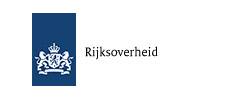Combination of Endocrine Disrupting Chemicals in cosmetics increases health risk
For the first time, in a study presented by the Danish Consumer Council, the combined amount of EDC-exposure from different products has been determined
03.06.2013 |Danish Consumer Council
The Danish Consumer Associaction, together with three other European consumer organizations, purchased 66 care personal products of common use. These products were tested for the presence and concentration of 11 different substances, which are suspected of being endocrine disruptors; all of them contained one or more of these substances.
The study also set up a `worst case scenario´ and calculated how much a person could be exposed to in a day. The results were presented to several experts, among them Andreas Kortenkamp, professor of Human Toxicology from the Brunel University; and to Julie Boberg, senior researcher from DTU Food from the Technical University of Denmark. It was calculated how much of the substances would be absorbed through the skin and bodies, and the results were compared with the naximum dose considered to pose no risk to our health.(maximum allowed daily intake).
The conclusion is worrying. With the use of conventional cosmetics and daily care products, there is a high risk of being exposed to potentially Endocrine Disrupting Chemicals (EDCs) above the levels which are considered to be safe.
The 11 chemicals with endocrine disrupting properties included in the test are the following: Methylparaben, Ethylhexyl methoxycinnamate, Triclosan, Ethylparaben, Benzophone 1, Cyclopentaoxane, Propylparaben, Benzophone 2, Cyclotetrasiloxane, Butylparaben, and Benzophone 3.(One can find names or abbreviations of such substances on the label of the cosmetic and body care products.)
Many scientists and NGO’s – among them WECF – are referring to the many research that show that the currently legally allowed maximum levels of chemicals in cosmetic products do not take into account the specific vulnerability of the developing fetus and young children for EDCs. Exposure in the womb can have negative effects on the health of the developing child with negative and lasting effects in later life.
The best way to avoid being exposed to toxic chemicals through the skin is to buy organic or eco-friendly cosmetics and other body care products.
Related News
Meet the Winners of the Gender Just Climate Solutions Award at COP24
On the 70th anniversary of the Universal Declaration of Human Rights, we awarded Gender Just Climate Solutions Winners at the climate negotiations in Katowice, Poland
11.12.2018
Invitation: Gender Just Climate Solutions Award 2018
10 December, COP24 Katowice
04.12.2018
Getting to the Future We Want
4-7 November, Brussels: European Environmental Bureau’s (EEB) Annual Conference
12.11.2018
GoodFood4All
WECF and partners all over Europe start GoodFood4All Campaign
06.11.2018
#Ruralwomen: join our Women2030 campaign!
15.10.2018







































